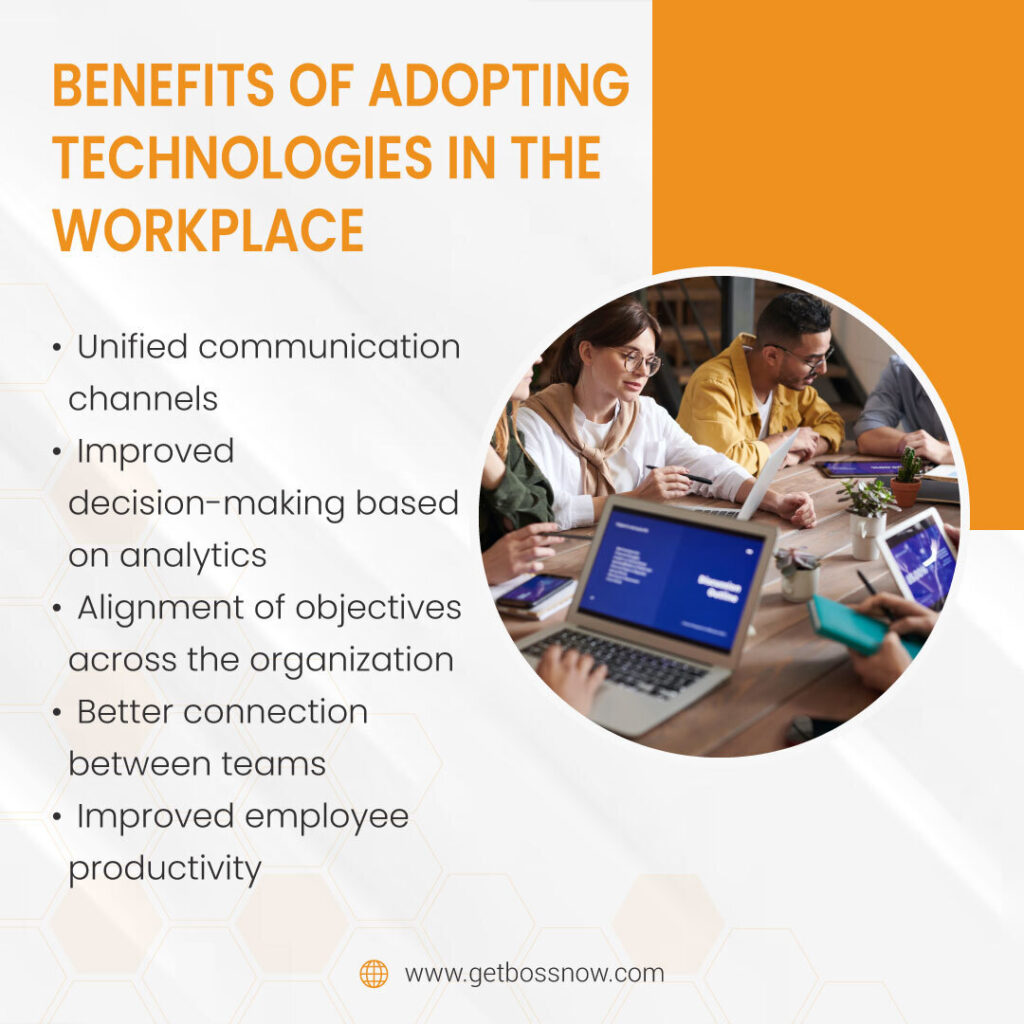Every business now uses technology as a vital tool to preserve its competitive advantage. Technology is also constantly evolving, with new choices and features released annually. This affects your staff because many of them are reluctant to embrace the change.
However, your success can be greatly increased by putting in place technology training and outlining how the tools will benefit the company and its workflows. A little bit of training and learning make the tools simple to use, boost worker productivity, and assist staff in embracing new technology.
All facets of your operations can be enhanced by new technology, from expanding your company to raising worker productivity. However, according to Statista, just about 50% opens a new window for businesses implementing cutting-edge technologies like cloud computing and SaaS marketing platforms in 2020.
Worker resistance could be one of the causes of this.
Workers may be resistant to new technology for a variety of reasons, such as:
- Management’s lack of communication
- Ignoring the advantages of technology
- Insecurity concerning technology
- Feeling undervalued and intimidated

Strategies for Successful New Technology Implementation Into the Workplace
It may seem impossible to overcome employee resistance to the implementation of new technology in the workplace but don’t give up. Here are the strategies that you can try for successful technology implementation in the workplace:
- Ask Employees for Their Input
Asking employees for their input is one of the most successful strategies to implement new technology. Your staff should be consulted before you make hasty purchases of new technology. This doesn’t need to be a formal interview. As an example, you could:
- Provide staff members with a survey asking about the technology they use daily and what would make their jobs easier.
- Your employees may have different ideas about what the greatest team task management software is.
- Create easily readable surveys with software like SurveyMonkey or Qualtrics so that they can be distributed throughout the organization.
- You can obtain insightful input on the software that would most benefit your staff members very fast by sending a questionnaire directly to their inboxes.
- Choose Your New Tech Tools Carefully
The technology you’ve selected and the reasoning behind it will determine whether your new program succeeds or fails.
When you’re thinking about adding a new tech tool to your stack, ask yourself: :
What advantages does the tool offer an organization?
Without a doubt, you wouldn’t introduce a new technological tool into your business if it didn’t provide benefits. Spend some time early in the process quantifying these benefits and developing a thorough intranet business case for your tool. By doing this, you’ll be better able to craft the “sales pitch” that will eventually win over your staff.
- Explain The Benefits
Although it seems apparent, this is far too frequently overlooked. Technology ought to have a purpose and improve workers’ lives at work. When employees are instructed to use new technology, they frequently do not see its value, which results in low adoption rates.
The technology was probably selected because it was new, offered increased productivity, or simplified and expedited tasks. By emphasizing these advantages, the introduction phase should inspire a similar sense of enthusiasm among the other members of the team. If they are enthusiastic about the new technology and how it will improve their lives, they are more likely to accept it.
- Provide Training
Lack of adequate and tailored training is one of the main threats to user adoption. When you buy technology from a vendor, many of them include training options. However, most of this training is generic and not tailored to your company’s procedures or culture. Before going live, users must see and interact with the system within the framework of their unique work processes.
Make sure that training is tailored to the needs of each stakeholder group and how they do their jobs to boost adoption. Making stakeholders believe their training has been a waste of time and leaving them even more perplexed because they can’t see how it relates to their jobs is a surefire way to boost resistance and decrease adoption.
- Evaluate Performance and Efficacy
It’s normal to wonder how to assess a new deployment’s success, but each organization has a unique response. At the outset of your project, define success for your organization. You might prefer, for instance, that users collaborate on files in the cloud rather than exchanging versions via email.
Once your success has been identified, ascertain the instruments at your disposal to gauge it. Make sure you collect your baseline data before launching so you have something to compare against.
Survey your users once more after your training and communications to find out what went well, what didn’t, and what training is still required. Make sure your users can provide open-ended feedback on a platform as well.
Talk to your stakeholders during a “closing session” after your deployment is finished. Consider the implementation of new technology, user feedback from your surveys, and potential future improvements. Ascertain how your adoption program can be maintained in the long run. This could involve regular gatherings for the champion network, surveys every three months, and more training.

Conclusion
So, these were all the strategies to implement new technology. Technology is essential for a company to stay competitive and is constantly evolving, which can be confusing and frustrating for staff members. Not every technological advancement is advantageous to a company, so they must create a technology roadmap or plan to reduce the frequency of changes.
Any impending changes should be thoroughly disclosed and announced well in advance of the implementation of the new technology. When the change happens, employees should be onboarded at a comfortable pace and trained on the essential features of the technology. Management should keep an eye on the technology’s efficacy and work to make it even more useful. In such dynamic landscapes, companies may also consider specialized companies like BOSS which is a digital marketing outsourcing company, to leverage their expertise and stay ahead in the digital realm.

